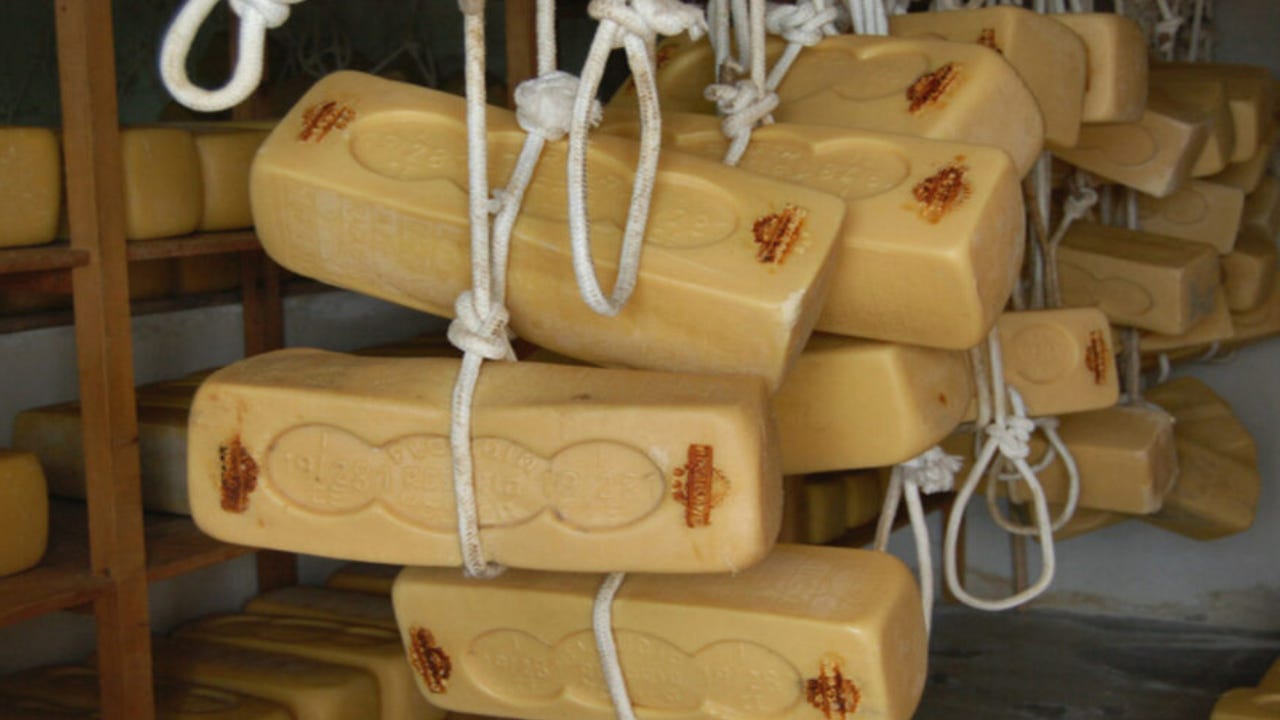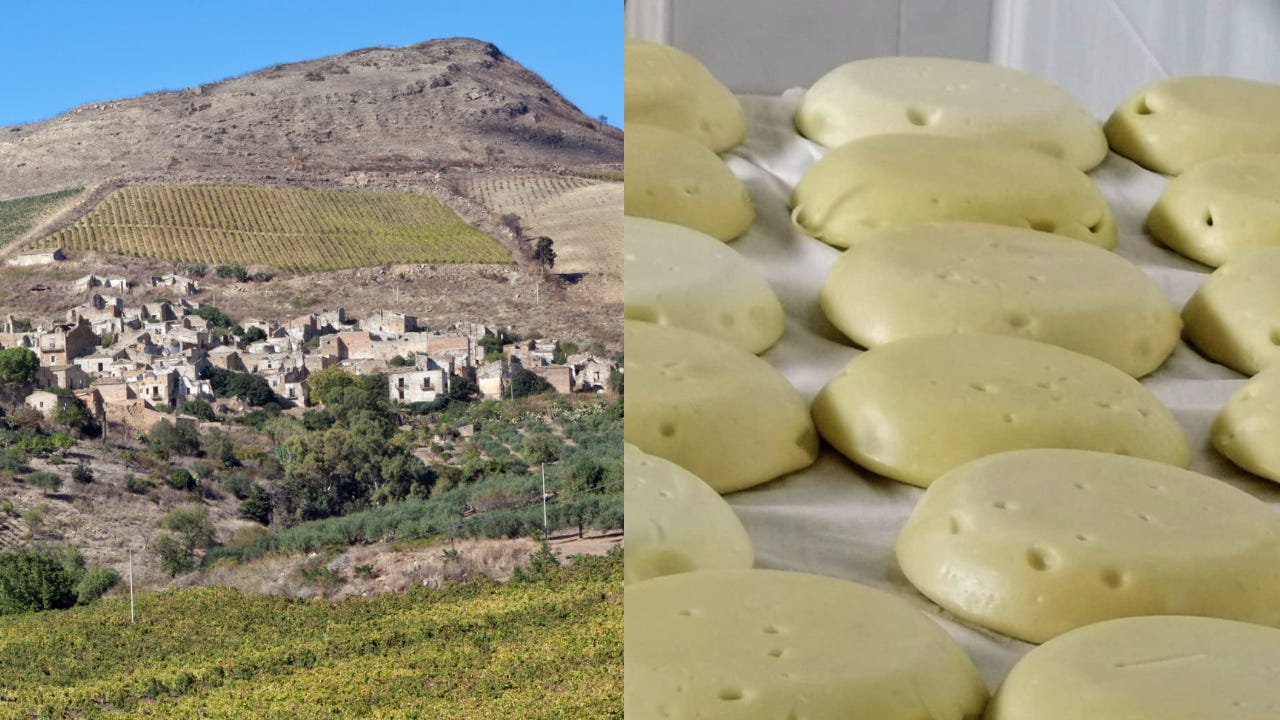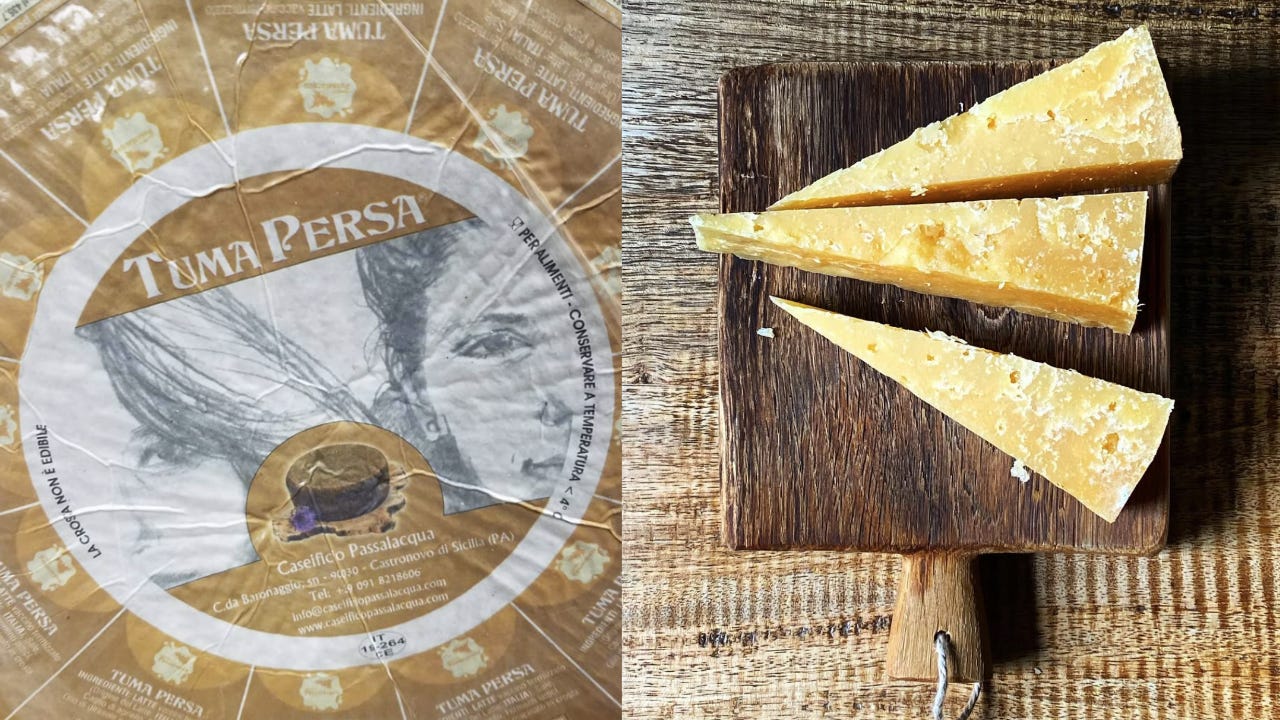The 4 Sicilian cheeses you need to know about
From the iconic rectangular Caciocavallo Ragusano to a forgotten cheese which has been brought back to life
Welcome to the first of a handful of Cabinet of Curiosities dedicated to one of the most diverse, beautiful and delicious regions in Italy: Sicily. In this issue, Laís - our resident cheese expert - shares her take on four types of cheese originating from every corner of Sicily.
A unique sicilian cheese for every taste
By Laís Zimmermann: exploring Puglia and southern Italy one small producer at a time
Cheese might not be the first product you associate with typical Sicilian food, however the island has a very present and traditional cheesemaking culture that has been around for centuries. Sicily’s diverse and complex terroirs can be showcased in four very different cheeses:
Ragusano
Sheep and goats dominate inland Sicily, yet the area around Ragusa and the Hyblean Plateau is flatter and gets enough rainfall for cows to be raised. The indigenous Modicana cow is intimately connected to the territory: by grazing the wheat and carob fields, they produce high quality milk that is used to make Ragusano, a pasta filata, caciocavallo style cheese with a unique shape and aging method. Proof of this cheese’s existence dates back to the 14th century, making it one of Sicily’s oldest cheeses.
Its production method is very traditional, from the raw (unpasteurized) milk used to the wooden molds and tools. Ragusano is shaped into a rectangular loaf, tied in pairs to the ends of a rope and hung on a wooden post to age for 6 to 18 months. The largest Caciocavallo Ragusano forms can weigh up to 16 kg!
Vastedda della Valle del Belice
On the other side of the island, near Marsala, the only sheep’s milk pasta filata cheese in Italy is produced. Legend says that the term Vastedda comes from the local dialect “vasta”, meaning spoiled, gone bad, and that it was first created as a farmer’s solution to Pecorino wheels that presented defects and therefore couldn’t be sold.
By letting a fresh Pecorino ferment for a few days, they managed to create the right acidic environment that would make the curds stretch, creating a new cheese and avoiding waste.
Vastedda became a desirable cheese on its own, and now farmers separate a portion of the daily milk especially for this product, while the rest becomes Pecorino and Ricotta.
The stretched curd is placed on deep ceramic dishes, the vastedde, where it firms up and receives its traditional round loaf shape. It is ready to be consumed after one hour, and it is best eaten in the following days.
Girgentana goat cheeses
Girgentana goats were brought to Sicily by the Arabs around 800 AD who settled in the area of Agrigento, which used to be named Girgenti. The breed has always been prized for its high quality milk: delicate, very digestible and with a great balance of fats and proteins.
In the beginning of the 20th century, it was common for farmers to go door to door, milking their goats at every stop. Gradually, the tradition was lost and the breed almost became extinct (there were only 4 left in all of Sicily!) - until a retired mechanic guided by childhood nostalgia decided to give a new life to the breed and open a caseificio to turn their precious milk into cheese.
The Girgentana is now a Slow Food Presidium, with a handful of producers making raw milk cheese of traditional styles from caciocavallo to primosale, as well as cheese with innovative techniques , uncommon for Sicily, such as bloomy rinds and lactic coagulation.
Tuma Persa
In a guide of Sicilian cheeses written in the 1930s there was a popular cheese found in many parts of the island under several different names. A cheese expert stumbled upon the book in the 90’s and realized that this cheese had since disappeared and no one alive knew about it. He began working with a cheesemaker, basing himself on the cheese’s description within the guide, to recreate it- and thus the Tuma Persa was reborn.
Persa means lost, but the name doesn’t stem from the fact that its recipe was forgotten for all those years, rather from a step of the production process. The cheese is aged twice for ten days before being coated in oil and black pepper and aged for a further year, basically being “forgotten” by the producer.
Because of this unique aging process the cheese remains soft, creamy, sweet and pungent with a herbaceous aftertaste that is reminiscent of blue cheeses.








